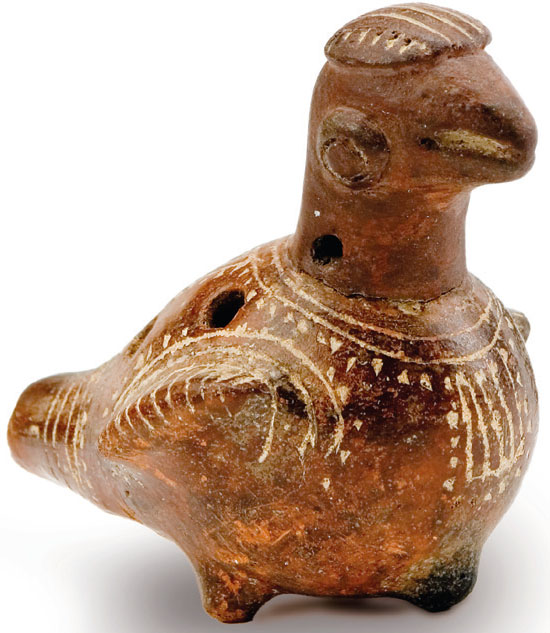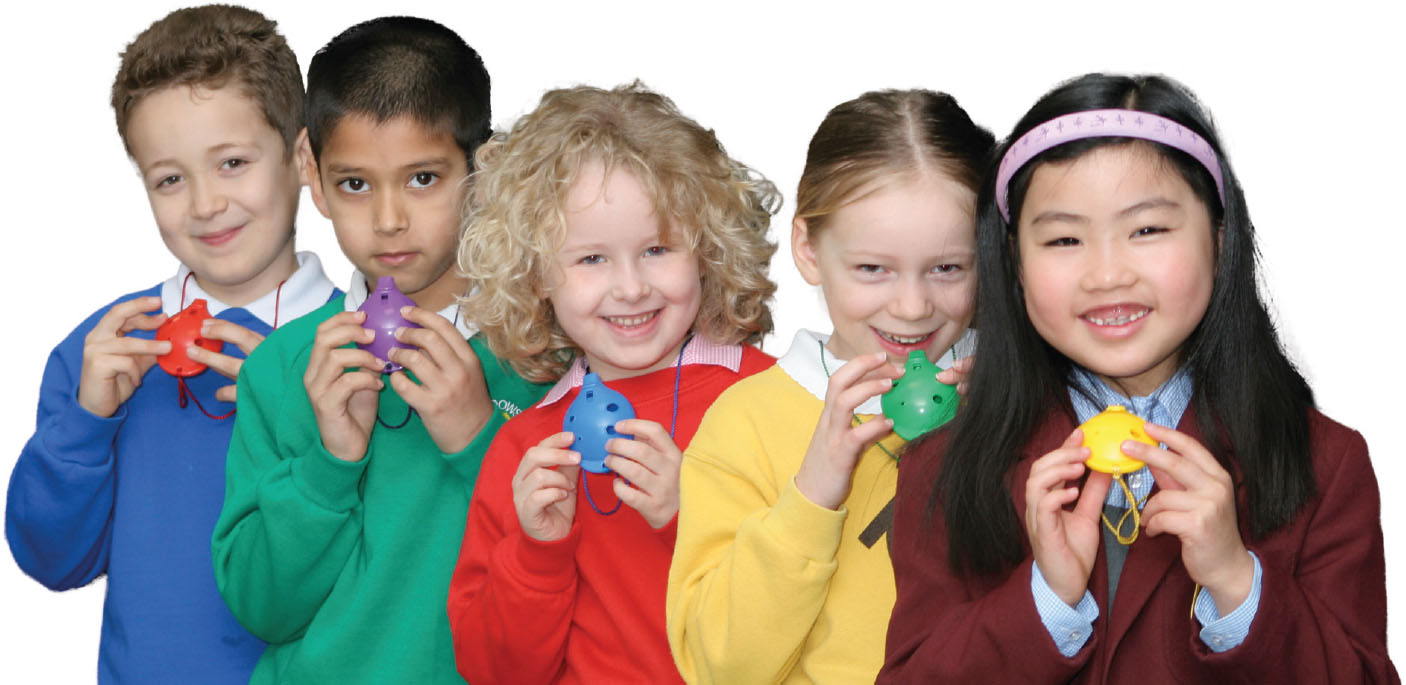
What is an ocarina? An easy question, you might be thinking. It's a little round blowy thing, it makes high-pitched toots and… that's about as far as my own knowledge stretches. How many notes can you play on them? What key are they in? Where do they originate from and how long is their history? Who plays them? The list of questions to which I could only answer ‘don't know’ was growing. Who better to look to for information than a couple who have made the instruments their life's work?
David and Christa Liggins are the founders of Ocarina Workshop and describe themselves as ‘guardians of an ancient instrument’. Not only that, they're in the Guinness World Records book because of ocarinas. In 2013, ably assisted by 3,081 ocarina players of all ages, they earned their place in history by filling the Royal Albert Hall and breaking the record for ‘Largest Ocarina Ensemble’. But before you get to the Albert Hall, you have to master the basics – luckily the Ligginses were more than happy to provide the answers to my questions.
A bit of background
An ocarina is a round ‘vessel’ flute with a fipple mouthpiece that the player blows into. The round body causes the pitch to sound an octave lower than the comparable straight-pipe flutes.
It also means that it's not possible to overblow and hit a higher overtone – technically an ocarina acts like a Helmholtz resonator, amplifying single frequencies, not the overtones that other wind instruments naturally produce. Woodwind teachers will be quick to spot the advantage this offers to beginners.
The full range of the English ocarina that the Ligginses manufacture is 16 notes, produced by covering different combinations of the six holes. There's also a four-hole version for beginners. It's a solid one-piece instrument fixed to an A440 tuning and it's not possible to mechanically alter the pitch – something for wind or string teachers to envy when they're doing the usual headjoint, reed or string adjustments.
Global and ancient
After the human voice and percussion, flutes are one of the oldest ways that humans have made music. I learned from the Ligginses that the ocarina dates back to the Stone Age – ancient ocarinas made from stone, wood, clay, beeswax, shell, gourd and bone have been found by archaeologists – and that there are globular flutes all over the world. There's also evidence to suggest that shells were being played as ocarinas in Egypt during the construction of the pyramids. But it's Latin America that's considered the true home of the ocarina.
‘I first discovered ocarinas while backpacking from Mexico to Tierra del Fuego’, says David. ‘In museums, I saw pre-Columbian vessel flutes labelled “ocarinas” and, as a flute-playing class music teacher, I was intrigued by their simplicity, beautiful tone and portability.’
Huge numbers of pre-Columbian vessel flutes have been found in Latin America, and since David's backpacking trip, the Ligginses have built their own collection up – it now contains over 2,000 historical instruments. These instruments have been both research specimens and sources of inspiration.
‘When I wrote Song of the Maya to fill a gap where no original musical texts existed, I discovered that my tune not only fitted the English ocarina beautifully but could also be played perfectly on a 2,000-year-old Mayan vessel flute in the collection,’ David tells me.
The ocarina today
The ocarina is an appealing option for music teachers in whole-class, small-group and individual lesson settings. Many common problems facing young or early-stage instrument learners just don't arise on the ocarina. I mentioned above that it cannot be overblown – it's also easier and quicker to make a pleasant sound when compared with flute, clarinet and recorder. They even come with strings to wear around the neck, making them impossible to drop on the floor.
On its website, Ocarina Workshop claims that even a baby can make a decent sound on their instruments. They've gone to great lengths to make their English ocarinas player-friendly, adding a lip-guard, raised rims around the finger-holes, and a finger-rest. The fine changes in breath pressure for different notes, which can be difficult for young wind players to master, are not needed on the ocarina.
The Ligginses have published many teaching methods and tune books, all of which use music notation alongside the ocarina tablature that they have created. It's possible to get pupils with the four-hole instrument playing a full octave in the very first lesson. For parents and carers (and any teachers who can't read music) the combination of familiar tunes and the self-explanatory tablature means there's no barrier to jumping in and learning alongside the children. Backing tracks are also available and the books are colourful, visually appealing and clearly laid out.

(Image credit: Ocarina Workshop)
David found inspiration in instruments like this bird, from Costa Rica (300BC – 300AD). With four equal-sized finger-holes, it was designed to play musically and to wear.
There's a teacher's version too – with piano accompaniments, guitar chords and suggestion for broadening out the music-making to include other instruments such as recorders, tin whistles, fifes, violins and ukuleles. I was impressed by the thousands in the Royal Albert Hall, but the Ligginses estimate that over the 35 years they've been running Ocarina Workshop, they've introduced more than a million children to music using the ocarina.
The couple is currently focussing on placing the ocarina and musical learning in the context of the wider history and geography curriculum and, unsurprisingly given David's introduction to the instrument, on world music.
‘In a history curriculum context, ocarinas sound authentic in the company of harps and lyres, sackbuts and shawms, Hammond organs and vibraphones, allowing children to perform impressively in many styles from early music to jazz. While other instruments have their own distinctive timbres that seem out of place in certain styles of music, the “ocarina-blend” fits them all,’ says David.
Ocarina Workshop's current focus is adventurous music-making – its new publications for 2019 will be Music Time-Traveller and Music World-Explorer, where the ocarina's great strength is again its ability to blend in.
‘In class, ocarinas seem authentically African, Asian or Andean when accompanied by kalimba and kora, sitar and tabla or charango and quena respectively,’ says David.
‘These are just some of the instruments that feature on the Music World-Explorer CD as children travel from London to all parts of the globe on a singing and instrument-playing adventure.’
Final note
I've come to realise that ocarinas are everywhere – they can be heard on records by artists as removed as The Troggs and Bing Crosby, as well as in the scores of Penderecki and Ligeti. After finding out more about the little instrument with a big history, I feel I did the ocarina an injustice by calling it a ‘round blowy thing’. However, it's been called worse – including sweet potato pipe in the USA and bologna sausage in Italy – and still managed to stand the test of time, helped in large part by people like David and Christa Liggins doing the hard work of preserving our musical heritage.

The simple design of the Ligginses’ ocarina makes it a great choice for young musicians








